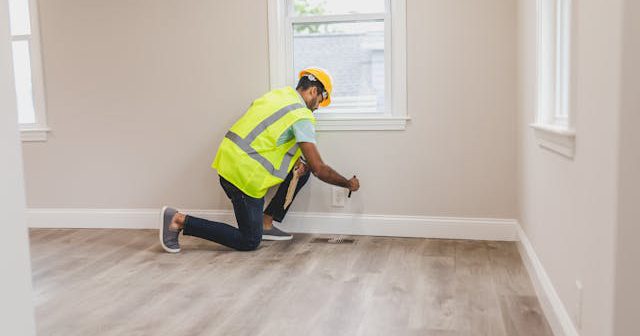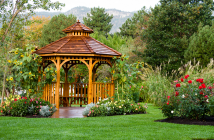A home should feel like the safest place in the world for your family. While you can’t control every risk outside, you can take meaningful steps to make your home a secure and comfortable space. From preventing accidents to safeguarding against unexpected hazards, a few thoughtful measures can make all the difference.
This guide walks you through the most important safety practices every homeowner should consider — covering everything from electrical safety to emergency preparedness. The aim is to help you protect what matters most: the people you love.
Install Reliable Locks and Entryway Security
Strong entryway security is your primary defense against unwanted access. Deadbolt locks provide a much higher level of protection compared to standard spring bolt locks, especially when paired with reinforced strike plates. For added convenience and control, many homeowners are turning to smart locks and video doorbells, so why not give these a try? They allow you to monitor who is at the door and even grant access remotely. While technology helps, basic maintenance is equally important. Check locks regularly to ensure they are secure and functioning correctly. If a lock feels loose or sticks, it is worth replacing or repairing immediately rather than leaving it vulnerable.
Protect Against Electrical Hazards
Electrical safety should be a priority, especially if your home is more than a decade old. Over time, wiring can deteriorate, outlets can loosen, and panels may become outdated. Common warning signs of potential electrical problems include frequent breaker trips, buzzing sounds near outlets, or switch plates that feel warm to the touch. Ignoring these signs can lead to dangerous situations such as electrical fires.
The safest approach is to have a licensed electrician conduct a full inspection, particularly if you have recently moved into a home and do not know its electrical history. Upgrades like replacing old wiring, installing ground fault circuit interrupters in kitchens and bathrooms, and adding surge protection can make a big difference. While small fixes like replacing a light fixture might seem simple, it is best to avoid any DIY electrical work unless you are qualified. Professional repairs ensure safety and compliance with current building codes.
Keep Fire Safety Equipment in Working Order
Fire safety equipment is crucial for any household’s safety, yet many people neglect it. Smoke alarms should be installed on every floor of the home and in key areas like bedrooms and hallways. These alarms need monthly testing to ensure they work properly, and batteries should be replaced at least once a year. Fire extinguishers are another must-have. Keep one in the kitchen and another near the garage or workshop. Make sure every family member knows where they are and how to use them. Beyond equipment, develop and practice an escape plan. Every person in the home should know two ways out of each room and where to meet once outside.
Prevent Slips, Trips, and Falls
Falls are one of the most common causes of home injuries, but they are also among the easiest to prevent. Loose rugs, cluttered hallways, and uneven flooring are common hazards. Using non-slip pads under rugs and repairing damaged floors can prevent many accidents. Adequate lighting in hallways, staircases, and entryways can enhance safety, especially for children and older adults. These small changes don’t just prevent injuries; they also make moving around the home more comfortable for everyone.
Childproof High-Risk Areas
Children are naturally curious, which makes childproofing a critical safety step. Safety gates can block access to dangerous areas like stairs or kitchens, reducing the risk of falls and burns. Cabinets containing cleaning products, medications, or sharp objects should have secure locks. Furniture and televisions should be anchored to the wall to prevent tipping accidents. Even small items can pose a choking hazard, so keep them out of reach. Creating a child-safe environment takes planning, but it is well worth the effort when it comes to preventing accidents.
Maintain Indoor Air Quality
Good air quality is vital for your family’s health. Dust, allergens, and pollutants can build up indoors if ventilation is poor or if HVAC systems are not maintained. One of the simplest ways to keep the air clean is to replace your HVAC filters regularly, usually every one to three months, depending on usage and the type of filter. Bathrooms and kitchens should have working exhaust fans to remove excess moisture and reduce the risk of mold growth. If your home feels stuffy or you notice a musty smell, it could be a sign of poor air circulation or hidden mold. Testing for radon and carbon monoxide is also important. Both are invisible and odorless, yet dangerous if levels are too high. Installing detectors for each can provide an early warning before they become a health threat.
Secure Windows and Glass Doors
Windows and glass doors are common points of entry for intruders and can also be a safety risk if they are not secured. Installing window locks and using shatter-resistant film adds a layer of protection against break-ins and accidental breakage. If you have young children, consider adding safety latches that prevent windows from opening wide enough for a child to slip through. Regularly check frames for any signs of damage or wear, as even a small gap can compromise security and energy efficiency. Glass doors should have sturdy locks and be kept closed and locked when not in use. Safety measures here protect against both intrusions and accidents.
Prepare for Emergencies
No matter how safe your home is, emergencies can still happen. Being prepared means having supplies and a plan in place. Always keep your first aid kit well-stocked and in an easily accessible location. Bottled water, non-perishable food, flashlights, and extra batteries should be on hand in case of power outages or natural disasters. It is also important to have a list of emergency contacts, including family, neighbors, and local services. Keep this list in a visible spot, such as near the phone or on the refrigerator. Review your plan regularly with all household members so everyone knows what to do if an emergency arises.
Home safety is not just about preventing harm; it’s about creating a place where your family can live, grow, and enjoy life without constant worry. Every precaution you take is an investment in your loved ones’ well-being and your own peace of mind. Safety measures might feel like small steps on their own, but together they build a powerful layer of protection that can make all the difference when it matters most. The key is to act before problems arise, not after. The comfort and security of your home should never be left to chance—it’s something you can shape, strengthen, and protect, starting right now.




